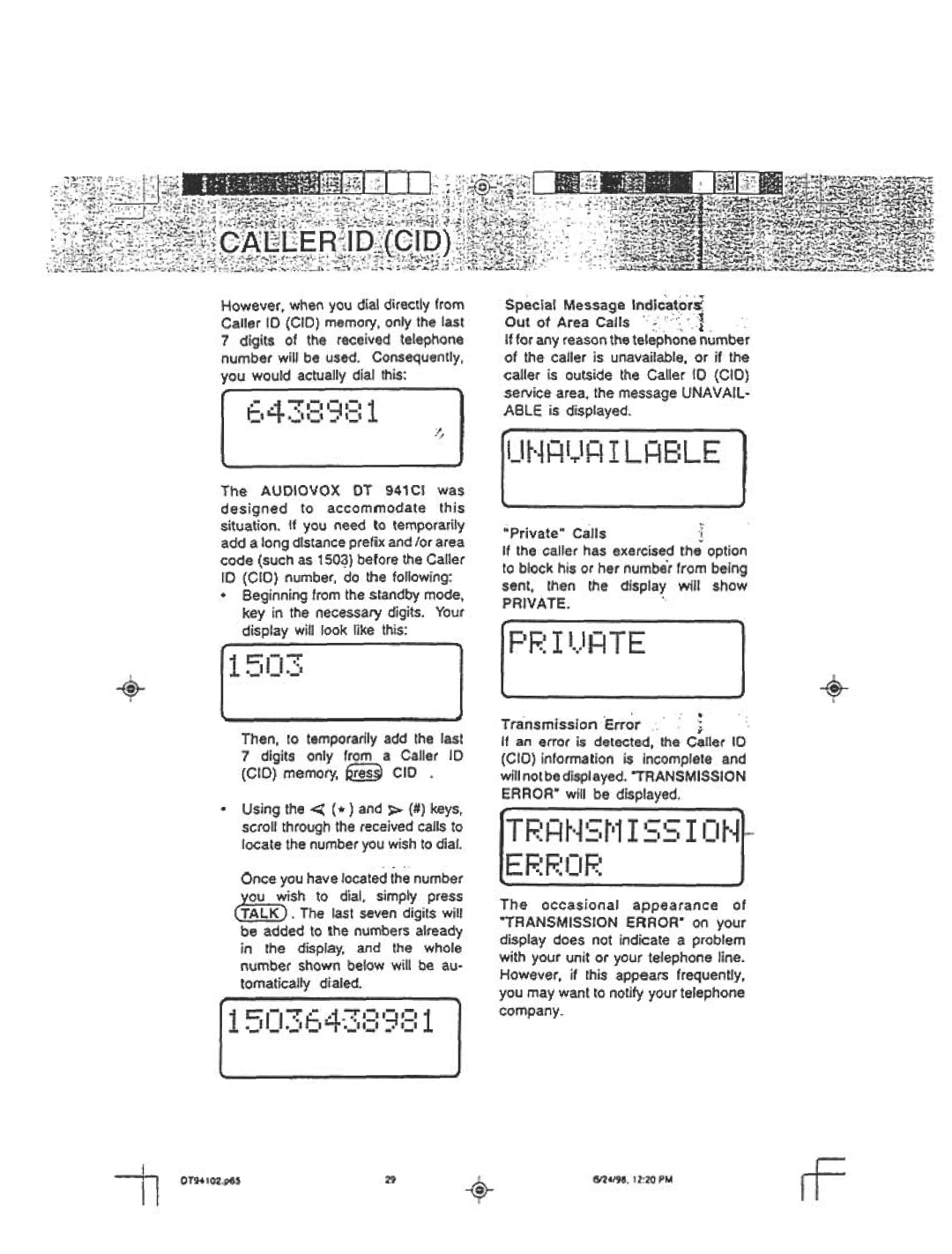
However. when you dial directly from Caller ID (CID) memory, only the last 7 digits of the received telephone number will be used. Consequently. you would actually dial this:
The AUDIOVOX DT 941CI was
designed to accommodate this situation. If you need to temporarily add a long distance prefix and lor area code (such as 150:?) before the Caller ID (CID) number, do the following:
.Beginning from the standby mode, key in the necessary digits. Your display will look like this:
+
Then, to temporarily add the last 7 digits only from a Caller ID
(cia) | memory, | ~ | CID . |
.Using | the ~ { * | ) and ~ | {#) keys, |
scroll through the received calls to locate the number you wish to dial.
,"'
Special Message Indicator~
Out of Area Calls c:~'~,::i
If for any reason the telephone number
of the caller is unavailable, or if the caller is outside the Caller ID {CID) service area, the message UNAVAIL.
ABLE is displayed.
|
| , |
"Private" | Calls | 'i |
If the caller has exercised the" option to block his or her number from being sent, then the display will show
PRIVATE.
+
...
Transmission Error;
If an error is detected, the Caller ID
(CID) information is incomplete and will not be displayed. "TRANSMISSION
ERROR" will be displayed.
Once you have located the number
~ish to dial, simply press lT~!:.!S.) .The last seven digits will be added to the numbers already in the display, and the whole number shown below will be au-
tomatically dialed.
The occasional appearance of
"TRANSMISSION ERROR" on your display does not indicate a problem with your unit or your telephone line. However, if this appears frequently, you may want to notify your telephone company.
I
OT94102.p65 | 29 | 6124/98, 12:20 PM |
Il |
